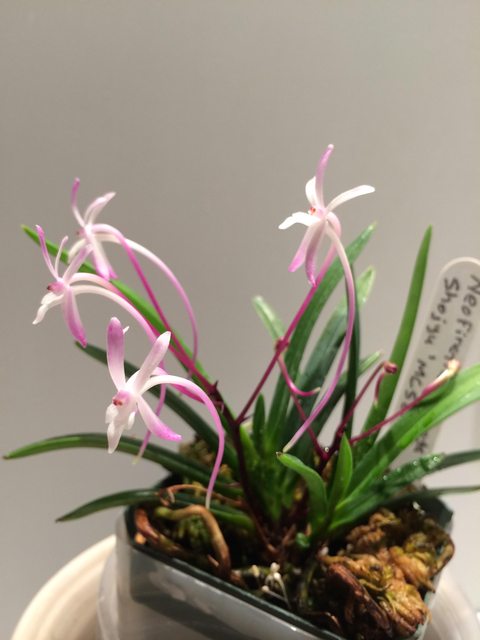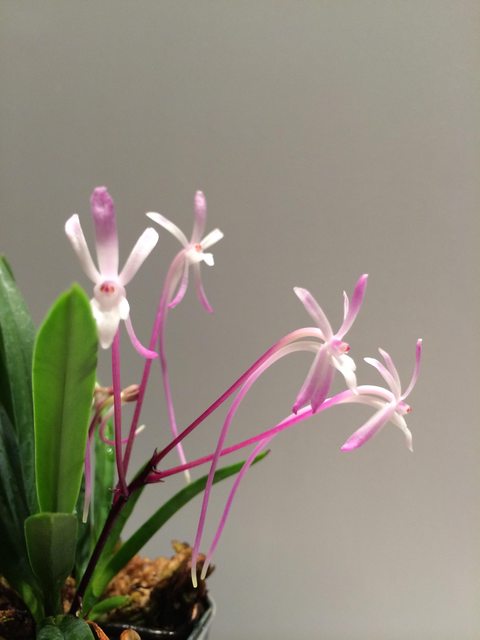Happypaphy7
Paphlover
Shojo in bloom.
Timing is slightly off and the other spike with three buds will open right after this bunch will have faded away.
Very strongly scented.
Last year, it had three spikes on a single growth, but only one survived and it made two flowers. I was terribly lazy with watering during the critical time.
I have been much better this time.


Timing is slightly off and the other spike with three buds will open right after this bunch will have faded away.
Very strongly scented.
Last year, it had three spikes on a single growth, but only one survived and it made two flowers. I was terribly lazy with watering during the critical time.
I have been much better this time.













































